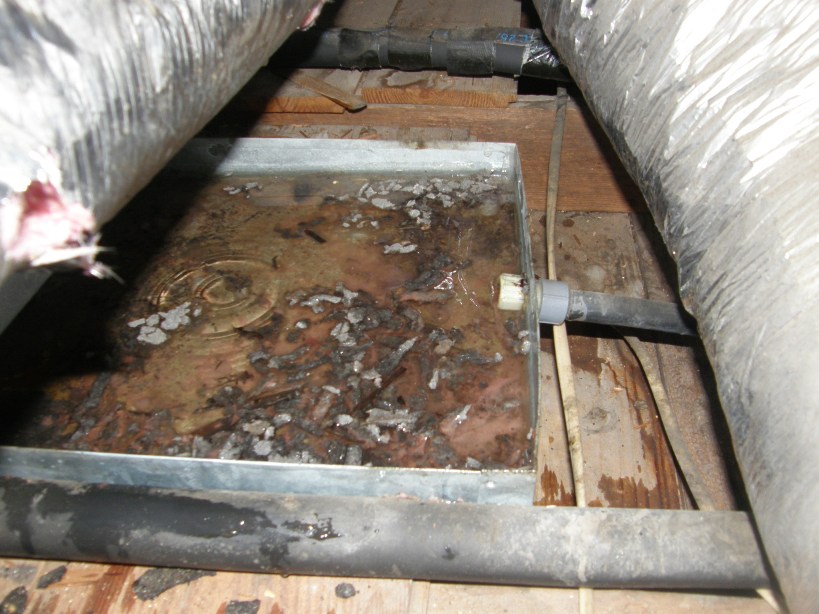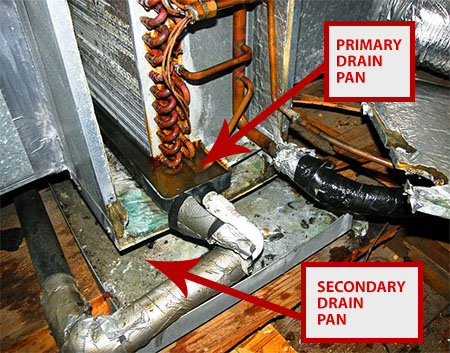Want to save with Paschal? Don’t miss our current offers and specials

Want to save with Paschal? Don’t miss our current offers and specials
Return to Paschal Resource & Education Hub

As your air conditioner unit works hard to produce cold or cool air, it is also producing buckets, and gallons of water – between 5-20 gallons a day when it starts to warm up outside. When air passes over the evaporator coil of your HVAC unit, the water vapor in the air condenses & drains off the coil into a drip pan beneath the air handler. The water is then funneled out of the drain line and into your sewer system. Taking a continuously wet drip pan and adding in the dark conditions and the result is a perfect breeding ground for mold and other fungus and microbes. Although your air conditioner can give you relief on hot days, your air conditioner drip pan also gives mold an excellent environment to grow in since the drip pan accumulates water.
A drip pan (also known as a condensate drip pan) is placed underneath your HVAC system’s evaporator coils and collects all of the moisture that drips off of them. Without the drip pan, that water would drip directly onto your HVAC system and seriously damage it.
Proper air conditioning maintenance, however, can help you when you’re contending with mold.

Here are a few suggestions to help you keep mold at bay:

Contending with mold in your air conditioner drip pan is important for a number of reasons. Mold and other types of fungus can exacerbate allergies. Also, if mold is growing in your A/C drip pan, it’s very likely that it can spread to other areas of your home.
If you need help contending with mold in your home, contact the experts at Paschal Air, Plumbing, & Electric. We’ve been serving Northwest Arkansas, SW Missouri, & the Fort Smith River Valley for over 50+ years.